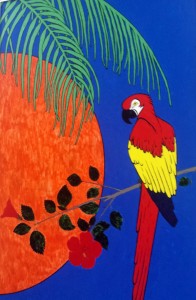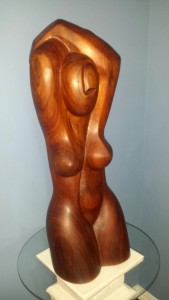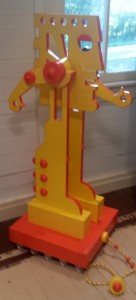An Artist's Journey

Missouri native Ralph Wayne Freer is an artist whose art reflects his life’s journey. Art is a roadmap of his journey. Like the scenery on a great road trip, his art is always changing. His art has evolved reflecting the people, places, and things that touched his life.
His art is featured at “The Flying F Gallery” located north of Poplar Bluff, Missouri. This building, formally the Collins General Store, built in 1894 was originally a farm house in which his mother, Letha Collins Freer, was born and later, circa 1930, converted into a store.
When asked how he became an artist, Ralph was puzzled by the question. “I have just always loved art,” he answered simply.
Numerous relocations associated with his father’s Army career and his own travels introduced him to the world of art. These travels included Europe, Central America, and throughout the United States. “I was fortunate to visit many great art museums, but more than that I think I got to see how art reflects humanity and culture. I was intrigued by that,” he explained.
Ralph’s earliest creative endeavors were carving small folk art hillbilly caricatures. While attending college in Springfield, Missouri, Ralph wandered into the store of artist Harold Enlow. He was intrigued by the Ozark carvings and after a brief conversation Ralph purchased his first carving tools from his store. Ralph returned from time to time to ask Harold to critique his progress.
Life’s journey then took Ralph to Key West, Florida where he continued to pursue his career as an educator. There he remained until 2001 working as a teacher and school counselor. While education was his vocation, his interest in art was heightened through formal training in life drawings and portrait sculpture. His carvings began to include realism; his pieces were studies of the human form.
Florida’s numerous hurricanes provided ample mahogany to be used as carving pieces.
“A storm would go through and neighbors would give me wood from downed trees on their property,” laughed the artist.
As time progressed, Ralph’s art transitioned to an abstract, more stylized expression. He started adding other elements to his sculptures, like bits of glass, clay, or metal.
“It was like playing to me,” he explained. “I was incorporating less realism into my sculptures.”
Ralph says he basically finds different shapes and objects, and then starts rearranging them in his head.
“I’d say if there is a common theme, it is the female figure. I find it fascinating in its complexity,” said Ralph. Like many artist before him, he interprets the female figure in new and interesting ways.
More recently his artistic expression has transitioned to what he refers to as a construction phase. This process involves the assembly of wooden pieces as opposed to sculpting. These pieces are angular and geometric with the incorporation of bright colors. His most recent completed series using this technique he calls “Pull Toys” many resembling techno-robots doing human things.
“This was more a whimsical stage for me. I have been having so much fun with this,” smiled the artist.
Currently Ralph is creating geometric wall sculptures incorporating LED back lighting. These pieces will be shown at Three Rivers Community College in November. While preparing for this approaching event, Ralph continues to work on consignment pieces.
Ralph’s artistic pieces can take anywhere from months to a year to complete. The sizes of completed pieces vary anywhere from a few feet to over six feet.
No matter how large the project, it all starts with an idea and a doodle. He carries pen and paper with him anywhere he goes, always open to forms he finds interesting enough to turn into a piece of art.
“Sometimes I just see something that triggers an idea,” he explained.
Is there a message to the viewer in his work?
“No…I want the viewer to come up with their own interpretation. That’s what keeps it interesting. Different people will interpret the same piece of art in different ways,” he explained.
What he has discovered on his artistic journey is that art is a universal language.
“Art ties humanity together. If you look at art around the world, you realize we are all far more the same than we are different,” said Ralph. He also stated that art and history are very much connected. “Even primitive people did some very sophisticated drawings,” he added. “I think humans have an innate need for self-expression. And it’s obvious that art is always influenced by cultures from around the world. Picasso was very influenced by African art. Art reflects culture as well as whom we are.”
How does Ralph see his own art?
“I think art is a part of my legacy,” he concluded.
The art he sees being produced in the United States he notes is reflective of the evolution in our culture.
“There was a time our young industrial nation gave little regard to fine art. All the great art museums were in Europe. Now I see that changing. Our nation is maturing. Many people are beginning to understand the value in art. Art galleries and museums are appearing more and more in rural communities. I think we live in exciting times,” surmised the artist.
Even though his “Flying F Gallery” might seem to be in the middle of nowhere, it is a small step in this evolution.
“This is the perfect place for me,” said Ralph sitting in a rocking chair on the porch of what was at one time an old country general store.
An American flag sways in the breeze, and he watches a Mustang zoom by on the winding road that is Highway W.
Someone once said, “All roads lead to Rome.”
In fact, “All roads lead to home.”




Life’s journey has brought Ralph Wayne Freer and his art home… to his “Flying F Gallery”.
